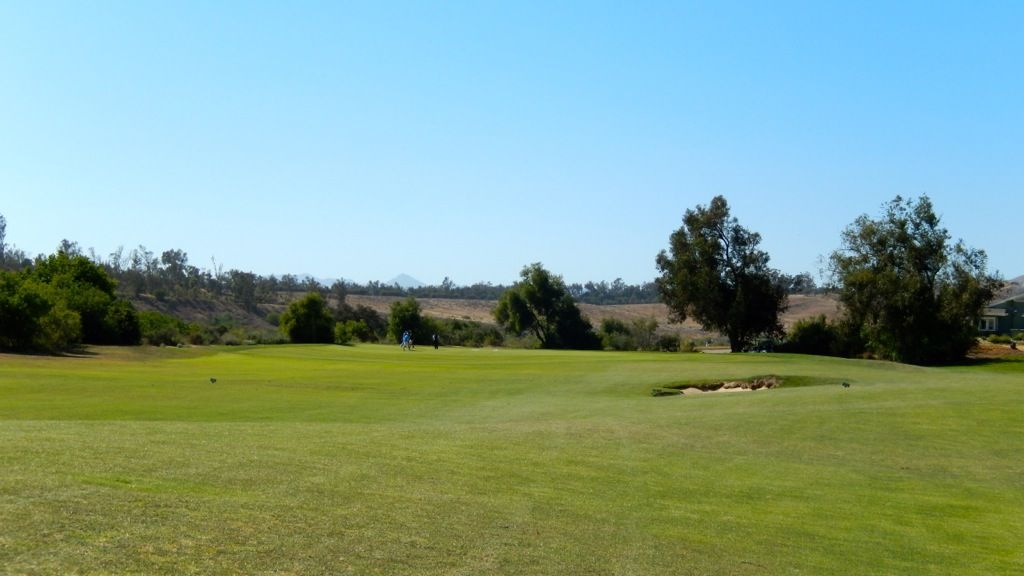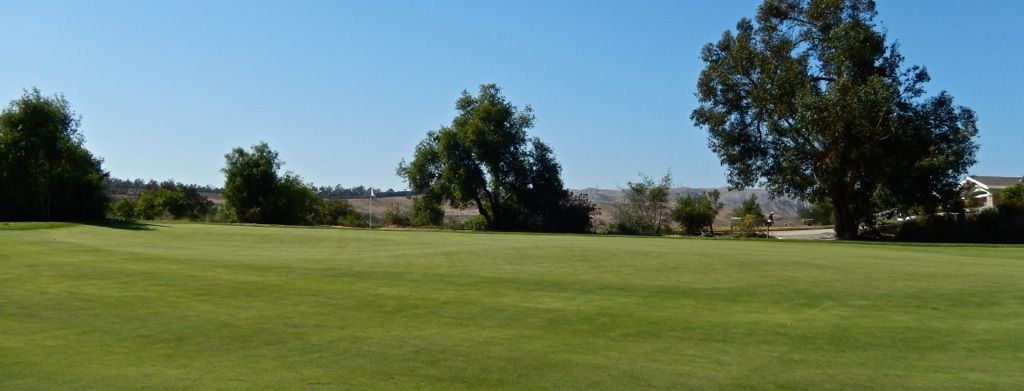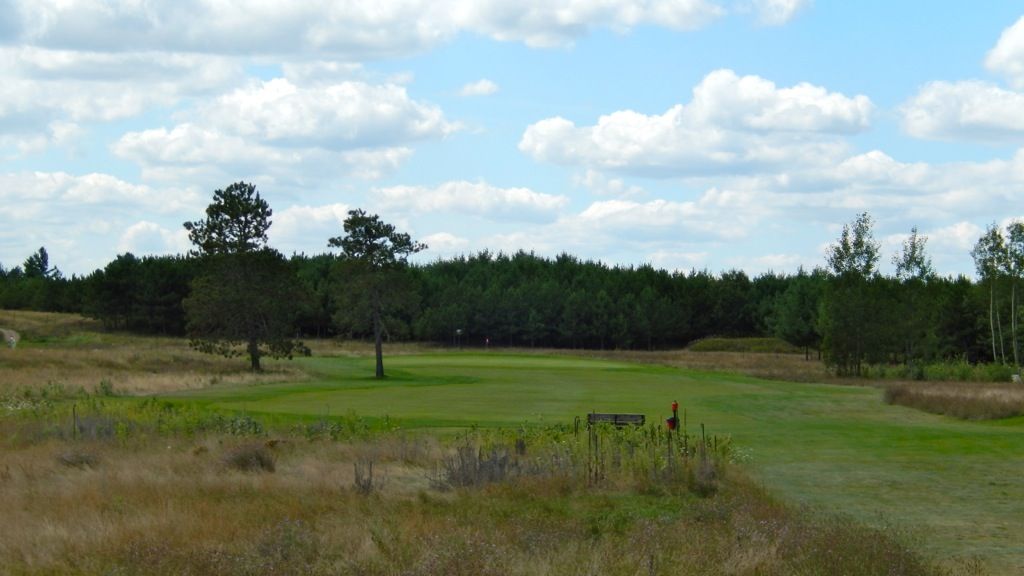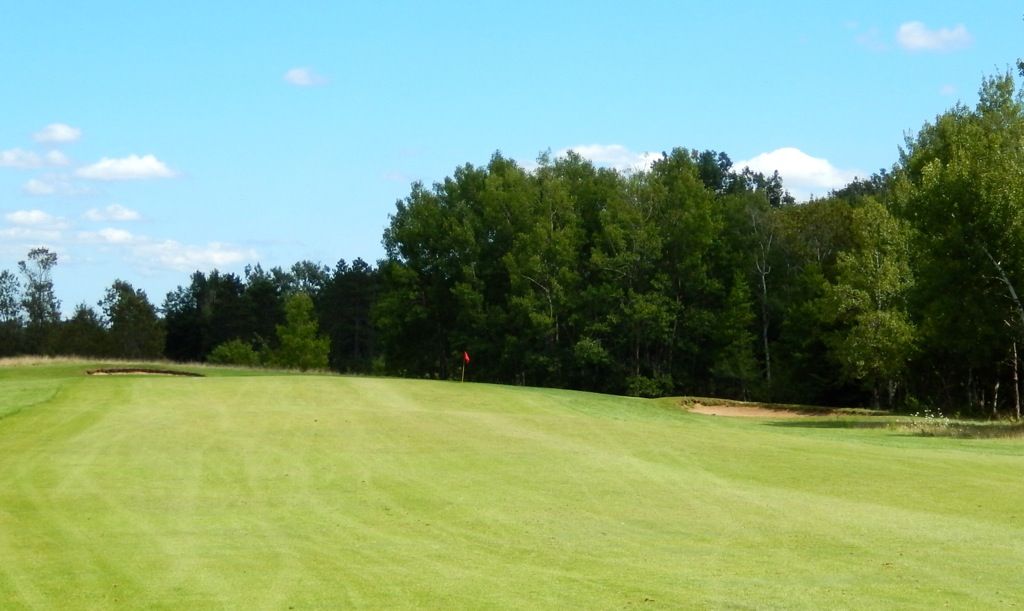Rustic Canyon Golf CourseMoorpark, California, United States
Architects: Gil Hanse, Geoff Shackelford and Jim Wagner (2002)
7,028 Yards, Par-72
Rating/Slope: 73.4/133
My Quick Review: Firm, Fast, Strategic and FUN
In his course profile on GolfClubAtlas.com, Ran Morrissett notes that the man that misses the first fairway should be shot. It's a good thing Ran was not the starter the day I played Rustic Canyon with a trio of GCAers as we'd have been a twosome for the rest of the round! The first fairway is indeed a very wide one; but, the intimidation of the short bunker right, the gunch farther to the right, and the out-of-bounds lurking left, combined with first tee jitters, will have a surprising number of golfers missing the fairway on this opening 540 yard par-5.


Rustic Canyon, especially if playing firm, is a thinking man's golf course. After a well-struck drive, golfers must decide whether to challenge the OB and a crossing dry-wash to leave a short approach from the left, or whether to lay-back to the right:


While laying back to the right seems like the 'obvious' choice, when the hole is playing downwind, golfers left with this short pitch wonder how they can keep their ball on the green. Playing right takes away the ground-game option:
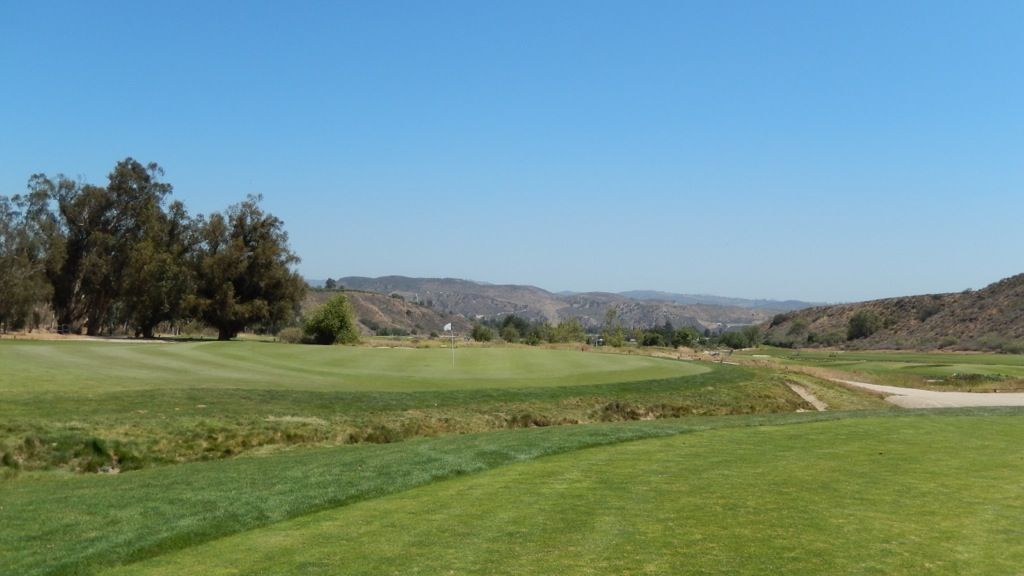
The green complex at the first is adequate; not one of the day's standouts. The green tilts back toward the tee and fairway cut to the left leaves ample room to miss.

The 460 yard par-4 second hole at Rustic Canyon plays in the same direction as the first. And, like the first, has out of bounds running the length of the left side. Only the distant bunker gives a clue of the preferred angle of approach.

Perhaps the most confusing feature on the golf course is this bath tub sized bunker 260 yards out that actually faces away from the tee! Is it meant to be in play from the 2nd tee, or on the 5th, or both or neither? I'll let the Rustic regulars explain...
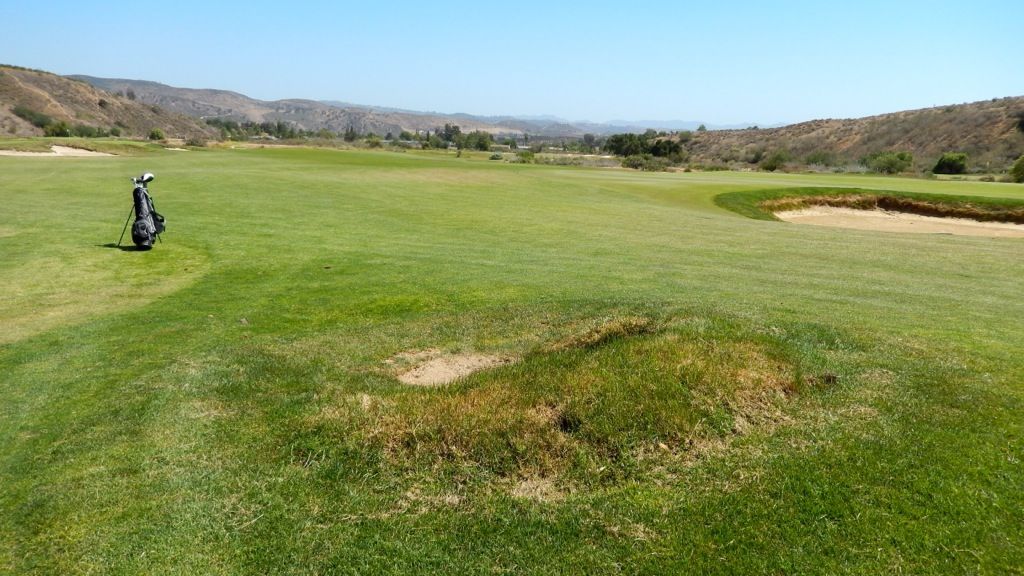
Playing away from the out-of-bounds leaves this view from the right. Effectively using force perspective, the top-line of the bunker matches the green's shaping making it appear as though the bunker is green side...

From the left-centre of the fairway, after challenging the out of bounds, the golfer is rewarded with a clear view of the green. Most importantly, the golfer will play his approach into the tilt of the green. Approaching this right-to-left tilted green from the right, especially if downwind, is a considerable challenge...

One of my playing partners said this is the best green complex on the golf course. Hopefully he will choose to explain why. If nothing else, these pictures help to show the leftward slope of the green...

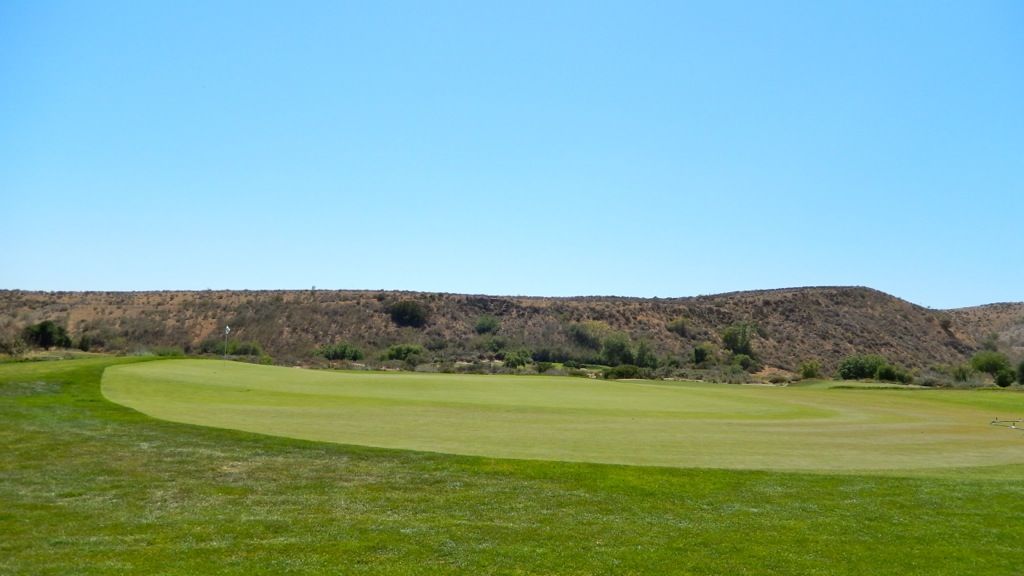
The third hole, at 315 yards, is likely out of reach for most, but playing downwind there is sufficient temptation to 'go for the glory'! The golfer is given the opportunity to play a safe tee shot to the right, but for the preferred angle of approach into the green the golfer must challenge a diagonal ridge that crosses the fairway.


The approach as seen from the left:

And the principle's nose bunker complex guarding the area 40 yards short-right of the green. The golfer who bails out after trying to drive the green will be left with the dreaded long bunker shot:

One of the hole's primary defences is this deep bunker long and left of the green. Playing an approach from the right carries with it the greater risk of finding this menacing hazard:

I am going to presume that the 170 yard 4th hole is one that has changed since Ran's 2002 review. Ran notes that from the "tee, the golfer sees an uninterrupted green path from tee to green, hence what could be so hard about these holes?" As is clear from this first picture, a bunker filled ridge cuts across the hole 50 yards short of the green, blocking the once uninterrupted path.


The golfer is given ample room to bail out right, but contouring in the bailout area, combined the two-humped spine that runs diagonally across the green, mean that recovery from the right (or anywhere really) is a tall task.

Little forgiveness is shown for tee shots that land long of the green...

The 5th holes is the second of three par-5s on the opening nine. At 570 yards, slightly uphill, and playing into the prevailing wind, most golfers will be trying to shorten the hole wherever possible. Such is the genius of the hole where not once, but twice, the golfer is asked to play a semi-blind, bold shot over scrub or wash to cut off yardage; and on both occasions, the cautious golfer is given more than ample room to tack his way around the trouble. From the tee, the ideal line is well to the right, on a line where the fairway cannot be seen:

On the second shot, the golfer must carefully choose on which line he is to play over the wash. The shortest line to the green is well to the left, though there is ample room to the right (thanks to the shared fairway with the 2nd) to miss.
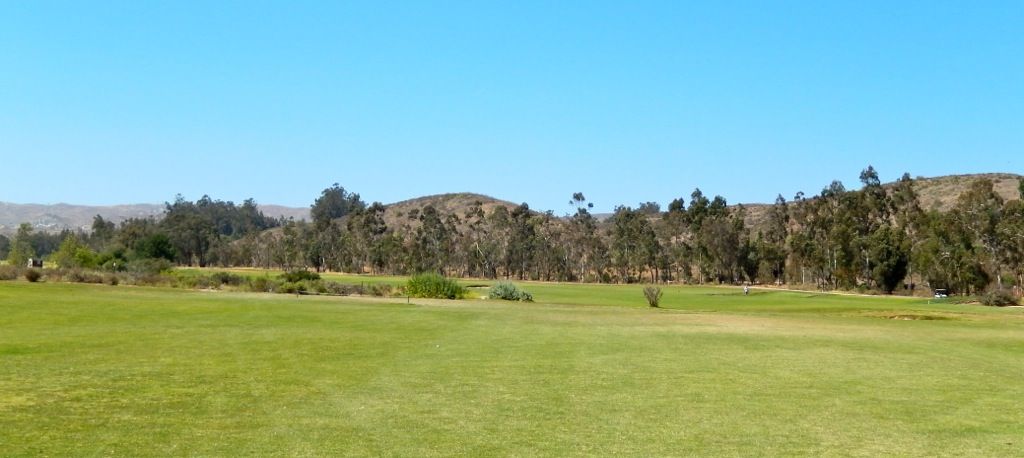

The green is dominated by a steep drop-off short and left:

A slight jog in the routing, as the 5th through 11th holes all run in the same general direction, with the exception of the 6th. At over 200 yards and with wash and native that blocks the view of the area short of the green, a first-time golfer at Rustic Canyon will surely be intimidated.


As the golfer nears the green, he sees there is ample room to miss short and right. This swale short of the green makes the tee shot considerably more interesting. Surely the play is to land the ball short of the swale and have it run onto the green. But, mis-hit the tee shot slightly and fail to get through the swale, and the golfer is faced with an extremely difficult recovery to a green that tilts away.


The 7th hole is another that has been changed as a result of the flood / mudslide in 2005. Ran called this hole a Channel hole, where the golfer had the option of playing a bold tee shot carrying at least 220 yards over wash to leave a pitch into the green, or to lay up to the left leaving a difficult angle of approach over the hazard. In 2004, the hole looked like this:

And in 2005, it looked like this:

By 2006 the hole was back in play, but the driving options that made the hole so great had been eliminated:

In 2011, the right fairway was extended to once again tempt the golfer to take-on the carry from the tee -- the carry today measures a minimum of 255 yards and, as a result, will not be taken on by many.

That is not to say the tee shot is wholly uninteresting as the golfer still must challenge the right side for the preferred angle and longer approach, or can play left for a wedge approach:

The wash crosses the hole at an angle:

I've written quite a bit thus far, but that is not to take focus away from the green complex, which must be the most controversial on the course. High 'wings' left and right on the green are separated by a deep swale, or half-pipe, that runs down the green's centre:



The 8th is just a wedge par-3, and is one of those holes where you're thinking birdie on the tee, but a slight mistake will result in bogey (and some head-shaking). The raised green is wide and shallow, and the overt hazards (bunkers short and left of the green) should not be in play.



The green slopes sharply from back-to-front making for many tough pin positions and requiring decision making from the tee. In all cases the golfer will want to keep his ball short of the pin as a miss over the green is a sure bogey.

A shelf on the left 1/4 of the green adds an excellent and challenging pin position:

On a golf course with tremendous width, the 9th fairway may be the widest and least defined fairway on the golf course. Bombers can likely reach this par-5 in two, but for most it is a very comfortable three-shotter. It's interesting how, when the golfer knows all he wants to do is keep his tee shot in play, he hits some of his worst tee shots. Such was the case for my group at the 9th (Alex excepted) where we all hit crooked and short tee shots.
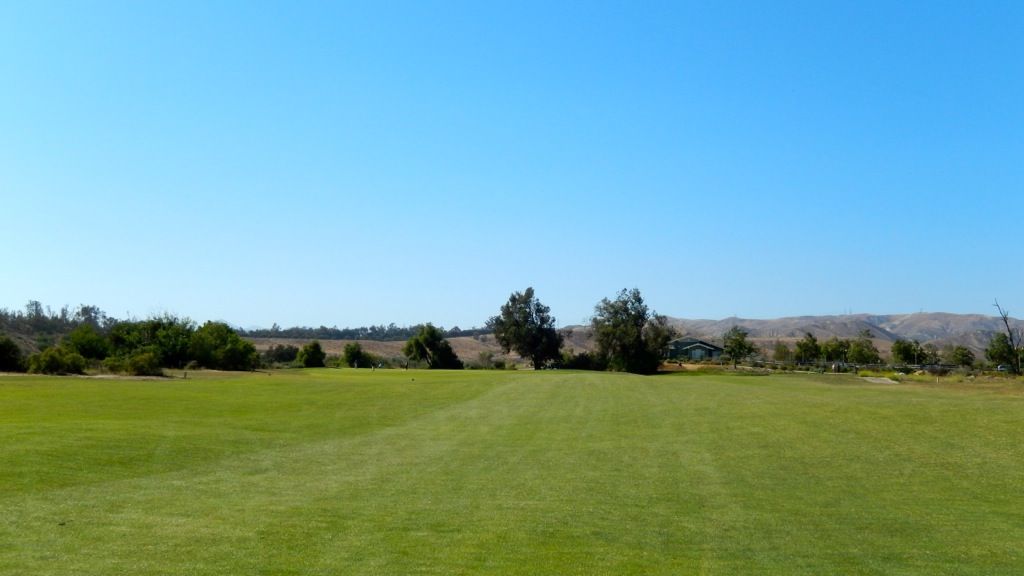
The 9th is a hole where the golfer needs to play backwards from the green. The wonderful 9th green is dominated by a swale front-left and a plateau back-left. Playing to the front-left pin the golfer will want to play left of this perfectly placed fairway bunker. Playing to any other pin the golfer will want to play as far right as he dare.
